One of the biggest and also the toughest questions in modern astronomy is the origins of the universe. How did it come into existence? How did it evolve into what we know today? Though there’s still a lot that scientists don’t know, they do have a general idea of how energy, matter, stars, and galaxies were formed.
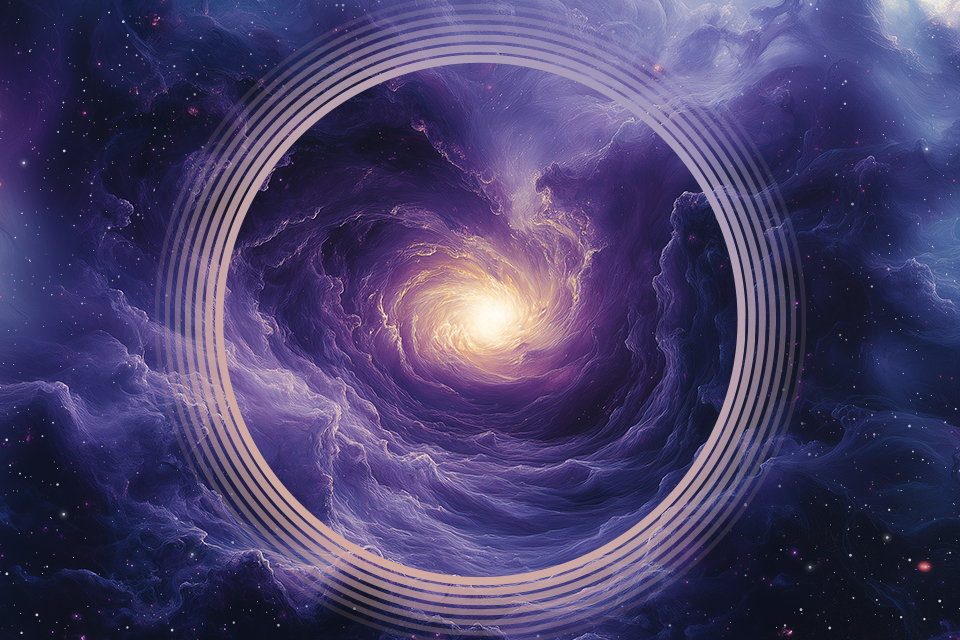
Questions About the Origin of the Universe
Our readers often ask about the origin of the universe and everything in it.
“How did it all (the universe, that is) begin—and why, and who (if anyone) was behind it?” —
Wonders Liudmyla Kruhlyk.
“If the Big Bang was a uniform expansion of space, why did galaxies form?” —
Asks Oleh Havryliuk.
When trying to find answers for the origins of the universe, we need to look at the bigger picture — that is, how scientists view the early moments, minutes, years, or millions of years of the world we see today. Until relatively recently, this topic was largely approached from a religious perspective. Even when scientific observations didn’t align with biblical accounts of creation, scientists were hesitant to formulate their own theories.
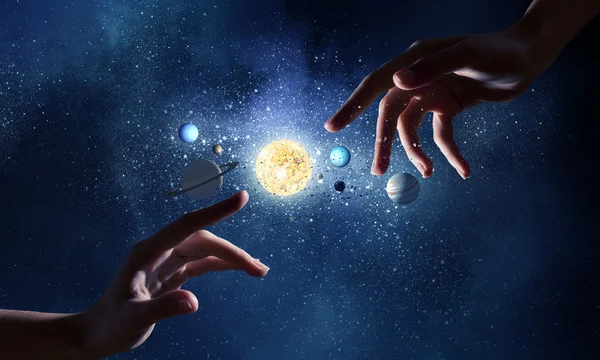
In the first half of the 20th century, physicists and astronomers fiercely debated the idea that there was no true “beginning” to the universe — that it had always existed. While this assumption hasn’t been definitively disproven, it has since become more of a fringe theory.
Instead, science presents a completely different picture of the universe’s birth and early evolution, and we’re eager to explore it with you.
The Initial Singularity
According to the most widely accepted theory today, at the very beginning, all the matter and energy of our universe — along with all of its time and space — were compressed into an incredibly small volume. We know this from observing distant galaxies, which appear to be “scattering” in all directions, and the farther away they are, the faster they move.
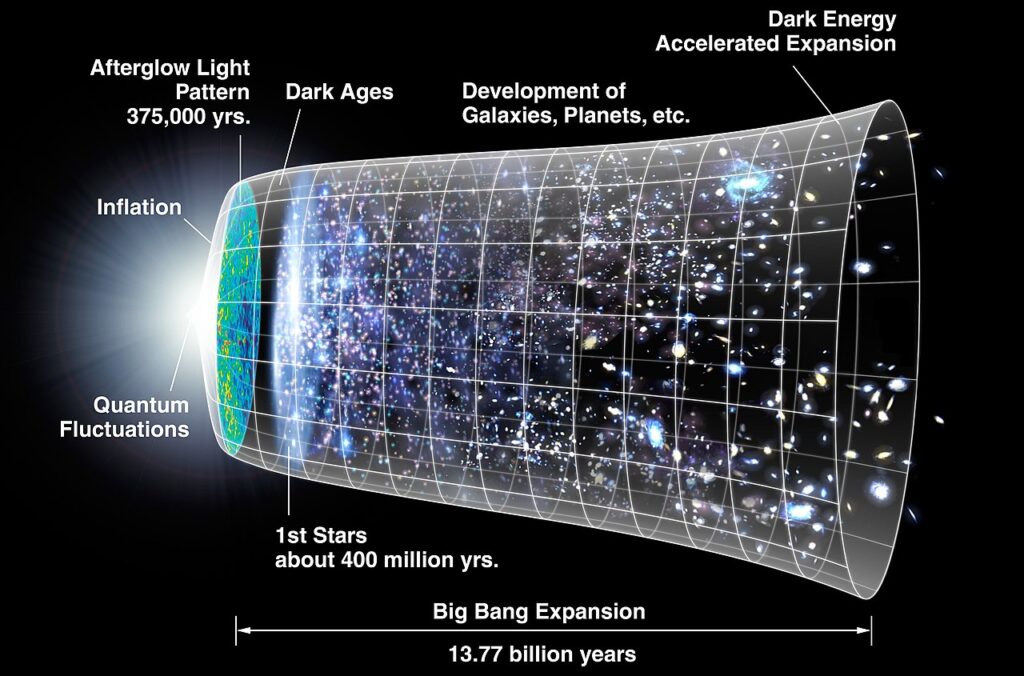
This doesn’t mean we’re at the center of the universe; in fact, from the perspective of someone viewing the Milky Way from billions of light-years away, our galaxy also appears to be running away. The analysis of galactic velocities strongly suggests that everything we know was once concentrated in a single point, which we call the birth of the universe. Most researchers agree that this scenario is a fairly accurate representation of what happened.
When asked about what happened before that, physicists candidly admit they don’t know. The laws of physics break down beyond 10-43 seconds after the universe’s origin. Neither Newtonian physics nor relativity or quantum mechanics can describe the events of this period. When the universe’s age is at zero, the equations lose all meaning, leading to what we call a cosmological singularity. We can’t determine what happened during that time or if there was any reason for the universe to exist; it’s possible that the very concept of “reason” didn’t even apply yet.
As it stands, scientists aren’t overly concerned about their inability to answer this question. They have plenty of mysteries to tackle, particularly the ones from later epochs that physics at least have a chance to explain.
Planck Epoch
The Planck epoch refers to the period of the universe’s history up to 10-43 seconds old. Then, the universe had a diameter of 10−35 meters, a density of 1097 kg/m³, and a temperature of 1032 K — these represent the maximum values that physics allows. Science can’t definitively answer what happened within this tiny volume during that time.
What is certain, though, is that matter and energy were not separate entities during that period. There were no atoms, no protons or neutrons, and even the four fundamental interactions — gravitational, electromagnetic, strong, and weak — were unified into a single force.
It’s crucial to understand just how brief this period was; 10-43 seconds is 43 orders of magnitude shorter than a second. To put that in perspective, a second is only 18 orders of magnitude shorter than the entire age of the universe. We’re talking about an incredibly fleeting moment, far beyond the capabilities of our measuring devices, let alone our human senses.
The Grand Unification Epoch and Cosmic Inflation
Immediately after the Planck epoch came the Grand Unification, marked by the separation of gravity from the other three fundamental forces. The previously homogeneous universe began to expand rapidly. Elementary particles had not yet formed, and the concepts of “mass” and “charge” were meaningless.
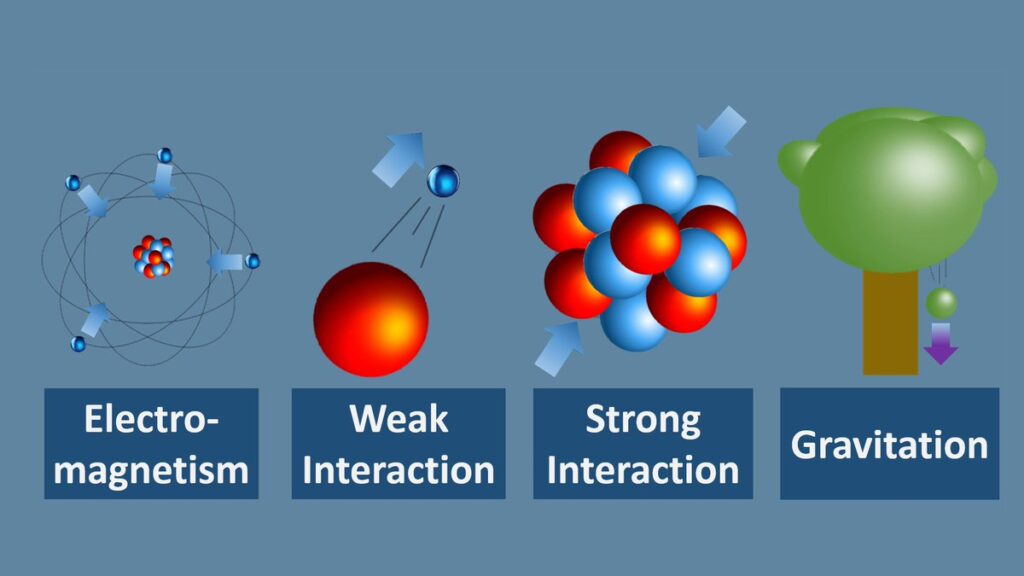
In reality, the Grand Unification was also incredibly brief, ending when the universe was just 10−36 seconds old. At that point, its density was 1074 g/cm³, and the temperature reached 1027 K. During this incredibly short period, the density of matter dropped by 23 orders of magnitude, yet it was still much higher than the density of atomic nuclei.
The Grand Unification concluded with the emergence of the strong interaction as a separate force. This is the same force that causes subatomic particles to combine into protons and neutrons.
From about 10−36 to 10−32 seconds after its birth, the universe experienced a remarkable thing. It increased by 26 orders of magnitude, expanding from a size smaller than a proton to about 10 centimeters.
This is known as the inflationary epoch, for which scientists have proposed various hypotheses. It’s believed that gravitational waves swept through the universe, reducing its homogeneity and potentially leading to what we now refer to as dark matter. The nature of dark matter remains a subject of debate, with some researchers suggesting it could consist of primordial black holes formed from those early fluctuations.

At this time, the vacuum as we know it began to emerge, but all matter in the universe still existed as quark-gluon plasma. Protons and atoms had not yet formed, as the temperature was still far too high — around 1022 K.
The Birth of Matter
The inflation period was followed by the Electroweak epoch, which lasted until the universe turned 10−12 seconds old. While matter still existed as quark-gluon plasma, we can actually envision what it looked like and even recreate these conditions, as they correspond to the highest energy levels achieved in the Large Hadron Collider.
During the Electroweak epoch, the universe expanded to a diameter of 0.6 AU, which is slightly larger than the diameter of Venus’s orbit.
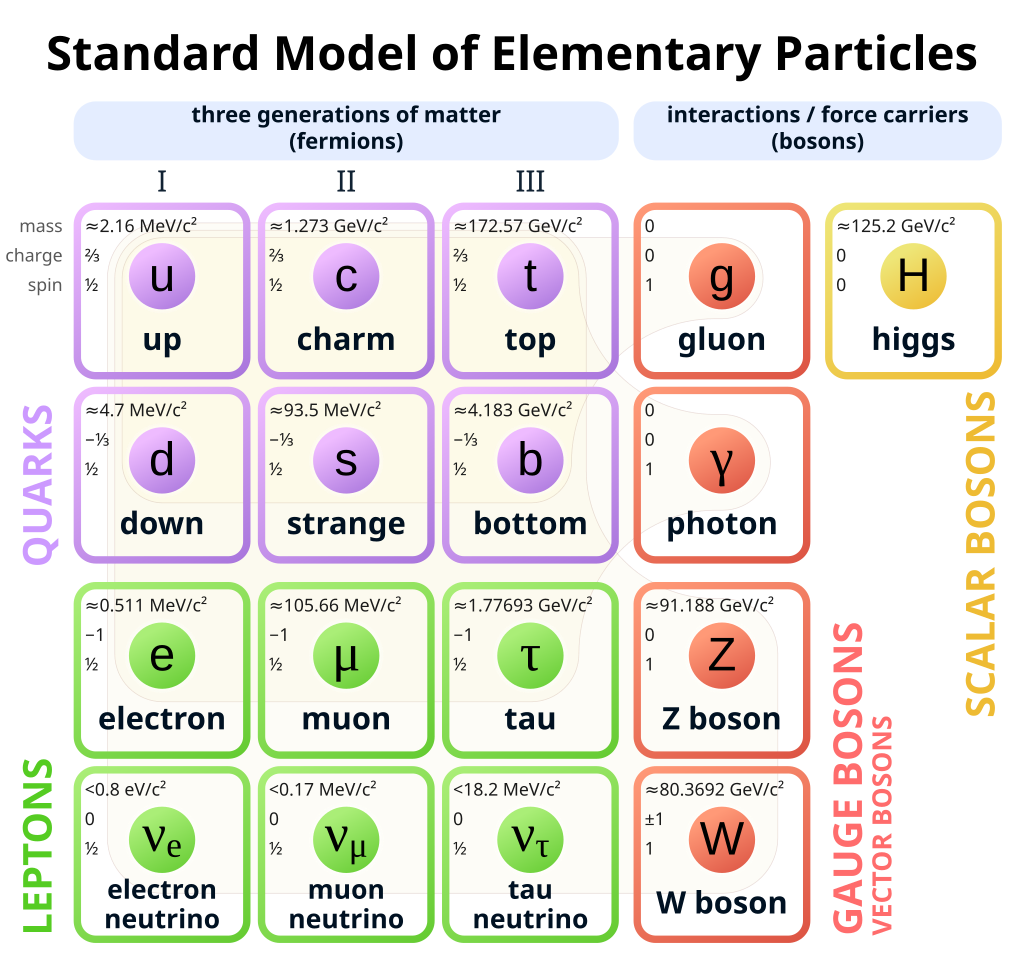
Following the Electroweak period was the Quark epoch, lasting from 10−12 to 10−5 seconds. The universe “cooled down” to a trillion Kelvins, which was still too hot for protons and neutrons to exist. However, the weak interaction finally separated from the electromagnetic force, allowing the laws of physics to take on their modern form.
At around 10-5 seconds, the universe cooled to temperatures similar to those found in the cores of stars, marking the beginning of the Hadron epoch. Protons and neutrons, along with their antiparticles, were formed. If matter and antimatter had been equal in quantity at this stage, matter could not have existed at all. Fortunately, there was a slight excess of regular matter.
At this point, the universe had expanded to about 1 light year in size. In the next 10 seconds, neutrinos were produced — particles that scientists can still detect today as background radiation — along with leptons, such as electrons, and photons.
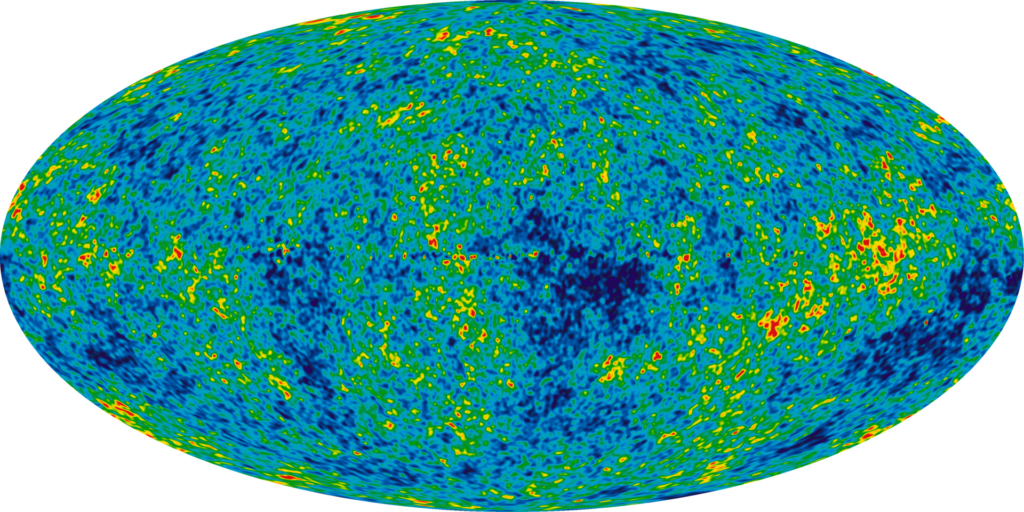
When the universe turned 10 seconds old, the temperature dropped enough for the first atoms to begin forming. This process lasted about 1,000 seconds, during which all the mass we now see as stars, planets, and nebulae came into existence, though none of these objects actually existed at that point.
About a quarter of all the atoms formed were helium, with another 5 percent being deuterium, and only trace amounts of lithium and beryllium. The remainder was ordinary hydrogen. Atoms of carbon and iron had not yet formed.
The Dark Ages and the Birth of Galaxies
Starting at around 10 seconds old, the universe entered a significant period known as the Recombination. It was filled with hot plasma — a sort of “soup” of atomic nuclei — that generated a vast number of photons. These photons are what we now observe as relic radiation.
Throughout this period, the universe continued to expand at faster-than-light speeds, even as it gradually began to shrink.
Before the universe turned 370,000, it had expanded to about 42 to 46 million light years in size. In comparison, the Milky Way has a diameter of about 100,000 light years, while the nearby Andromeda Galaxy is about 2.2 million light years away. Despite this growth, the universe was still roughly 1,000 times smaller than it is today.
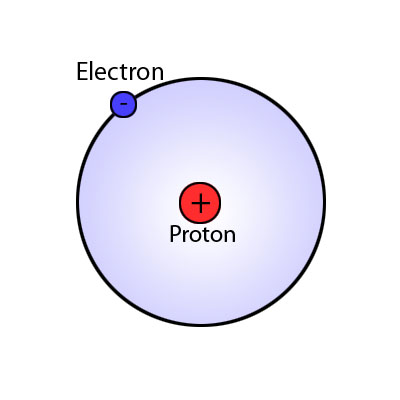
At the end of Recombination, plasma temperatures dropped from a few million Kelvin to about 4,000, which is cooler than the surface of the Sun.
As matter gradually lost its ability to emit photons, a new era began, known as the Dark Ages. It would still be a while before stars could start forming, even though there were already significant inhomogeneities in matter throughout the cosmos. The universe was filled with neutral hydrogen, which only emitted radio waves at a wavelength of 21 cm. Never before or since has space been so dark.

The Dark Ages lasted significantly longer than Recombination, ending around 380 million years after the Big Bang. During this period, the universe expanded to a size 20 times smaller than it is today.
Scientists aren’t exactly sure when the cosmic Dark Ages ended, though. As inhomogeneities grew in the gas clouds filling the universe, some of these clouds eventually formed the first stars. Their light reionized the hydrogen, bringing the universe out of darkness.
It’s hard to pinpoint the exact timing of this event. Recent research indicates that some galaxies formed much earlier than the 370 million-year mark; even now, we observe them as they were then, when the universe was only 200-250 million years old. Individual stars, on the other hand, could have spawned as early as 150 million years after the Big Bang.
Regardless, the Reionization lasted until the universe turned 1 billion. Then the first galaxies formed with supermassive black holes at their centers. Scientists believe these two processes are closely related, and by the end of the Dark Ages, the universe had become sufficiently heterogeneous for both to occur.
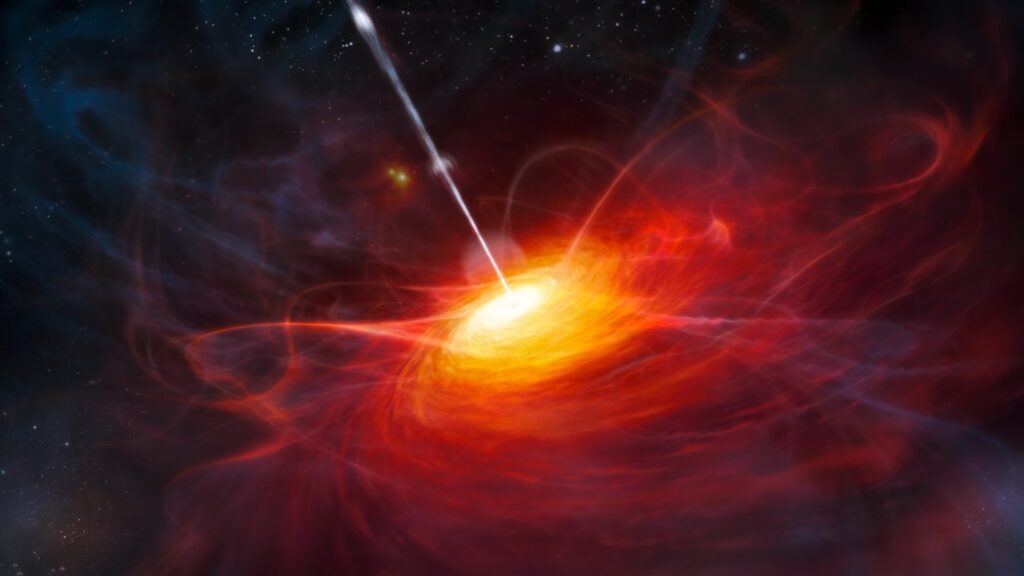
As for how exactly this happened, we still have more questions than answers. Observations from the James Webb Space Telescope indicate that both galaxies and their black holes are significantly larger than mainstream theories estimate. Instead of finding the expected dwarf galaxies that should have formed first and merged to create star systems like the Milky Way, James Webb has revealed surprisingly few of them.
An alternative theory proposes a different scenario where galaxies form directly as giant disks of matter that break apart into individual stars. There’s also a hypothesis that suggests black holes may have formed first, potentially arising from the collapse of massive gas clouds containing stars up to 1,000 times the mass of the Sun. These massive stars would have collapsed rapidly, leading to the creation of black holes that then began to grow.
Regardless of how it happened, it was during this period that the universe started to take on its current form. The first generation of stars evolved rapidly and then exploded as supernovae, producing carbon, iron, and other elements that would later form planets. But that’s a story for another time.

